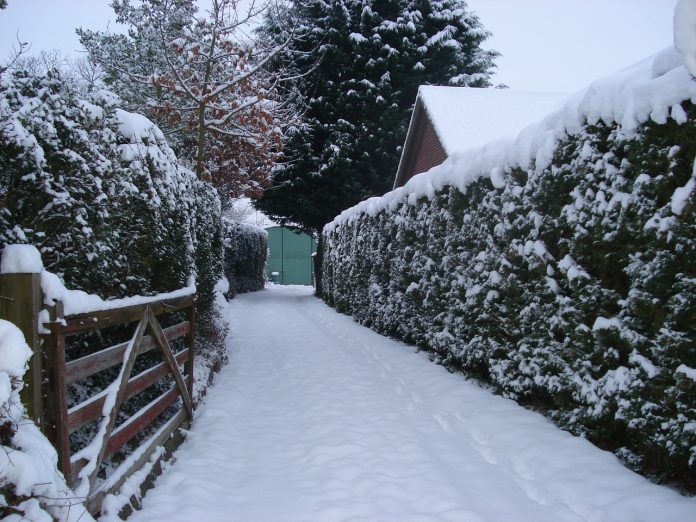We already had our first brush with winter weather.
A couple of weeks ago, I was out shoveling the driveway and it started snowing. By the time I finished and went inside, my hair was soaked and snow was already starting to accumulate. In an hour, it didn’t even look like I had shoveled at all.
The roads were icy enough for my daughter to get her first snow day, so I can assure you the driveway was icy, as well. However, there are no snow days at work, so I walked outside to start my car. It was then, slipping and swinging my arms to regain balance, that I realized I needed to purchase a deicer for the driveway and sidewalks.
But how do you choose the best deicing product for your home? Well, there are a few things to consider when it comes to effectiveness and protecting the plants, grass, animals and cement around your house.
Salt
When it comes to melting ice on driveways and sidewalks after a winter storm, different salts work differently. The ones you’ll be able to find in stores are chloride-based. The most popular combinations of salt are sodium chloride, potassium chloride, calcium chloride and magnesium chloride.
It’s important to know which type of salt you are buying. It not only makes a difference in its effectiveness but can also help you protect the cement and landscaping around your home.
Calcium Chloride
Calcium chloride is the best deicer that’s readily available to homeowners for two reasons. It works at lower temperatures than the other readily available products and, as long as it isn’t applied excessively, it won’t harm plants. This chloride-based product tends not to release as much chloride as other products and is not as toxic.
Lowest temperature threshold: -25 F
Sodium Chloride
Sodium chloride, commonly called rock salt, is generally the cheapest and most widely available deicer. It’s often mixed with sand or other materials, and is only effective at melting ice when temperatures remain above 12 F. When temperatures drop below that threshold, sodium chloride won’t melt the ice. It is also considered more toxic than calcium chloride or magnesium chloride because it releases more chloride.
Lowest temperature threshold: 12 F
Magnesium Chloride
Magnesium chloride has the second lowest temperature threshold, effective to 5 F. Along with the calcium chloride, magnesium chloride doesn’t release as much chloride as sodium chloride and potassium chloride. It can also be considered not as toxic as those varieties.
Lowest temperature threshold: 5 F
Potassium Chloride
Potassium chloride has the highest temperature threshold and is least effective, melting only to 20 F. Additionally, like sodium chloride, is can be considered more toxic than calcium chloride or magnesium chloride because it releases more chloride.
Lowest temperature threshold: 20 F
Deicer tips
- No matter which product you chose it’s important to only use enough deicer to melt the ice in the desired area. Using an excessive amount can harm plants, animals and concrete surfaces around your home. This is especially true for sodium chloride and potassium chloride. However, all chloride-based products can be toxic to the environment. Using small amounts is always safer.
- You can try using a non-chloride product like calcium magnesium acetate to reduce your environmental impact. These chemicals work together preventing snow from sticking together or to the surface of your driveway and sidewalks. However, calcium magnesium acetate is only effective to 20 F.
- Some homeowners decide to use fertilizer as a substitute for chloride-based salt products in an effort to reduce their environmental impact, but that’s not always the best idea either. In order for fertilizer to effectively melt ice, you have to apply way more fertilizer than needed. By doing this, plant material can be harmed anyway. Applying too much fertilizer is not safe.
- Natural products, such as wood chips, ash, sand, bird seed, cat litter and sunflower seeds, won’t effectively melt ice but may be able to apply traction on slippery surfaces.
- No matter what type of precut you chose to use, you should remove as much snow as you can before applying a deicing product to ensure its efficiency. Deicers are the most effective when they are applied to ice rather than snow.
- Let the sun help. Hold off on applying deicer if the weather looks like it’s going to warm up the day after a storm.










